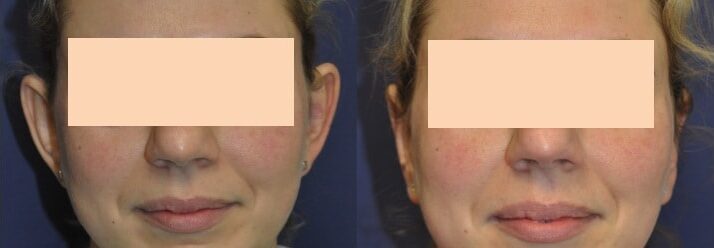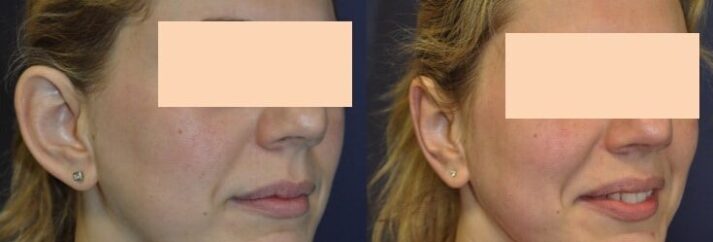Prominent Ear Correction
Tunbridge Wells, Kent, London
Prominent Ear Correction Surgery
The underlying cartilage in the ear (the rubbery skeleton of the ear) is reshaped using specially-placed internal stitches via an incision in the crease at the back of the ear. The reshaping of the cartilage corrects the prominence of the ear (it is nothing to do with tightening the skin behind the ear).
“My favourite thing about my work is this incredible privilege to be in a position where I can impact people’s lives.”
Before & After


What does it involve?
The procedure is either done under a local (with you awake) or a general anaesthetic (with you asleep) as a day case (in and out of hospital in the same day). You should not drive on the day of surgery (if an adult).
What are the benefits?
This is a reliable and safe operation that will give you a permanent correction of your prominent ears.
How long does the surgery take?
The operation takes about 90-minutes (for two ears).
What is the recovery period?
You will need to wear a bandage or a headband (like a tennis player’s sweat band) 24-hours a day for the week following surgery. After that, you will need to wear a headband at night for 6-weeks, to make sure your ears don’t bend the wrong way when you are asleep. Ideally, you should bring a headband with you to hospital so it can be put on you at the time of your operation. It is best if this is a dark colour as there may be a little blood that can appear on it, which would be more obvious on a white headband.
How long before daily activities may be resumed?
You should avoid all physical activity for 6-weeks following the surgery to prevent damage to your new ears. Contact sports should be avoided for at least 8-weeks.
What are the success rates?
This technique is very reliable and safe. However, there is a reported recurrence rate of up to 10% – this means that for every 10 ears that are corrected, 1 may “ping” back. This may be due to the stitches snapping as a result of your ear being knocked, or from infection or bleeding in the ear afterwards. If this happens, the operation can be redone at a later date.

What are the possible complications?
Prominent ear correction has a low complication rate. The main complications have been covered in the question above: infection, bleeding and recurrence of the prominent ears are the principle complications.
However, there is a further very important possible complication to mention: keloid or hypertrophic scar formation. These are both types of abnormal scars, whereby the scars behind the ears become very lumpy (and may also be painful). In some rare cases, the scars may become so lumpy that they result in the ears being pushed out to be just as prominent as they were before surgery. These can be very difficult to treat, although there are different treatments available. If you have any history of abnormal scar formation, it is very important to mention it, as it may suggest you are at a higher risk for forming keloid or hypertrophic scars behind your ears.
Want to learn more about Otoplasty in Tunbridge Wells?
To learn more about prominent ear correction, please contact us.
Make an EnquiryVideos
What Can Be Done About Ear Lobes?
Marc Pacifico Otoplasty FAQs
